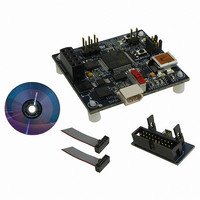STEVAL-MKI062V2 STMicroelectronics, STEVAL-MKI062V2 Datasheet - Page 37

STEVAL-MKI062V2
Manufacturer Part Number
STEVAL-MKI062V2
Description
BOARD EVAL FOR MEMS SENSORS
Manufacturer
STMicroelectronics
Series
iNEMOr
Datasheets
1.STEVAL-MKI009V1.pdf
(42 pages)
2.STEVAL-MKI062V2.pdf
(4 pages)
3.STEVAL-MKI062V2.pdf
(18 pages)
4.STEVAL-MKI062V2.pdf
(27 pages)
Specifications of STEVAL-MKI062V2
Design Resources
STEVAL-MKI062V2 Gerber Files STEVAL-MKI062V2 Schematic STEVAL-MKI062V2 Bill of Materials
Sensor Type
Accelerometer, Gyroscope, Magnetometer, Pressure, Temperature
Sensing Range
±2g,4g,8g; 300 ~ 1100mbar; 300°/sec; -55 ~125°C
Interface
I²C, USB
Sensitivity
Multiple
Voltage - Supply
5V, USB
Embedded
Yes, MCU, 32-Bit
Utilized Ic / Part
LPR430AL, LY330ALH, LSM303DLH, LPS001DL, STM32F103RE, STLM75
Interface Type
USB, CAN, I2C
Maximum Operating Temperature
+ 125 C
Minimum Operating Temperature
- 55 C
Silicon Manufacturer
STMicroelectronics
Kit Application Type
Sensor
Application Sub Type
MEMS Device
Silicon Family Name
INEMO
Kit Contents
MicroSD Card Slot, COM Connector, Reset Button,
Rohs Compliant
Yes
Lead Free Status / RoHS Status
Lead free / RoHS Compliant
For Use With/related Products
STM32F103RE
Other names
497-10508
Available stocks
Company
Part Number
Manufacturer
Quantity
Price
Company:
Part Number:
STEVAL-MKI062V2
Manufacturer:
STMicroelectronics
Quantity:
135
UM0701
7.6.2
Chip selection
Depending on the type of architecture, the user has to select either an analog or digital
MEMS device. After, depending on the precision needed, the user will choose either the
LIS344ALH or LIS3LV02DL, if small-angle detection is required. If such a level of precision
is not needed, one can use the LIS302SG or LIS302DL. If the z axis is not affected (the
device is supposed to tilt around the z axis), a 2-axis accelerometer could be used.
Example 1
In the case of the LIS3LV02DL, the resolution is 1 mg per lsb. Thus, for an acceleration
variation of 1 mg, the angle measured on the z axis will be cos
axis, the angle detection will be sin
measurable is therefore 0.057°. This difference between the x and z axis is explained by the
behavior of the sine/cosine function.
Example 2
In the case of the LIS344ALH, the resolution is given by the formula [noise
density*rt(BW*correction factor)]. BW is the bandwidth and the correction factor is linked to
the low-pass filtering for the V
variation of 0.625 mg, the angle detection on the z axis will be cos
the x axis, the angle detection will be sin
Example 3
In the case of the LIS302DL, the resolution is 18 mg per lsb. Thus, for an acceleration
variation of 18 mg, the angle measured on the z axis will be cos
axis, the angle detection will be sin
Example 4
For the LIS302SG the resolution is 2.5 mg. Thus, the smallest angle variation measurable is
0.14°.
Due to the behavior of the sine/cosine functions and the angle and precision expected, the
user will have to consider the measured acceleration on one or all axes.
OUT
Doc ID 15703 Rev 1
. The resolution is 0.625 mg. Thus, for an acceleration
–1
–1
(10
(18
–3
–3
–1
) = 0.057°. The smallest angle variation
) = 1°.
(0.625*10
–3
) = 0.036°.
STM32-MEMS development kit
–1
–1
(1–10
(1-18
–1
(1-0.625*10
–3
–3
) = 2.5°. For the x
) = 10.9°. For the x
–3
) = 2°. For
37/42




















